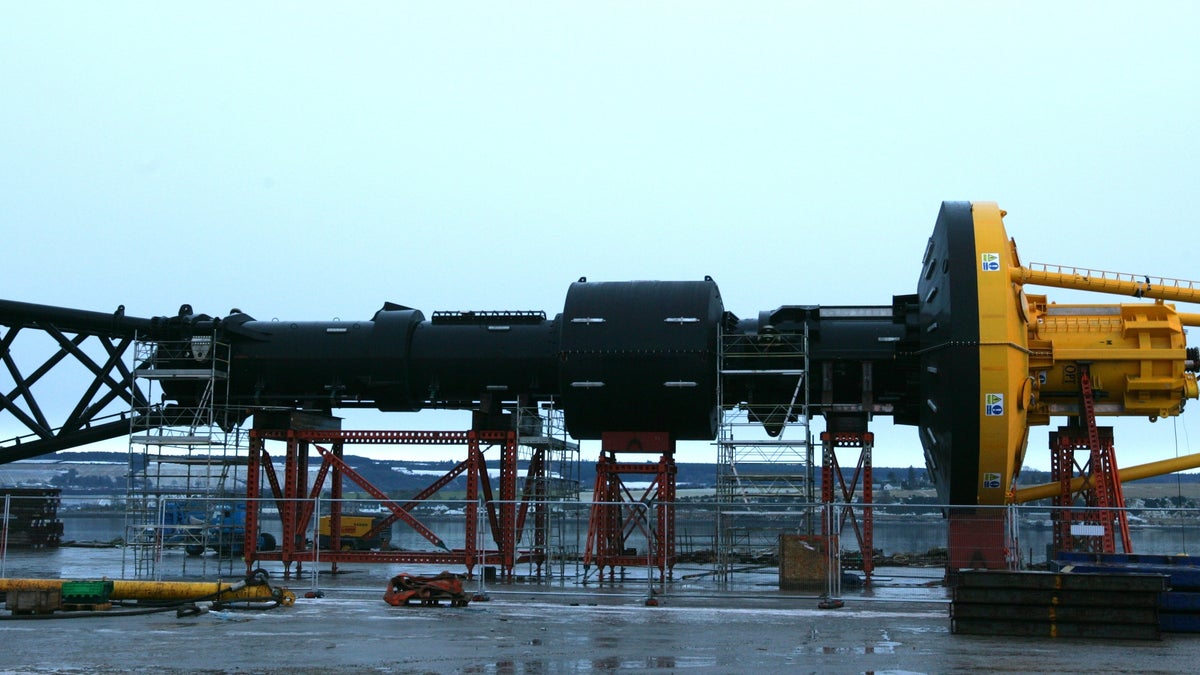Ocean Power Tech readies energy-harvesting buoy
The PowerBuoy is about 150 feet from top to bottom with most of the structure under water, a design said to minimize the environmental impact.

Ocean Power Technologies today said it has completed construction of a "workhorse" buoy designed to generate electricity from wave motion for utility-scale projects.
The company's PB150 PowerBuoy is about 150 feet from top to bottom, although most of the structure is underwater. It can generate a peak of 150 kilowatts of power and feed the grid in waves between 4.9 feet and 22.9 feet.
The plan is to deploy the PB150 later this year about 33 miles off the coast of Scotland, where the device was manufactured and has been tested in the European Marine Energy Research Center.
The same buoy is planned for a 1.5 megawatt wave energy farm off the coast of Oregon as well. Ocean Power Technologies expects the buoys, which are moored to the ocean floor and connected to land by a cable, to be in arrays of two or three to minimize the footprint.
Siting renewable energy products in the ocean is one of the most difficult challenges facing wave and tidal power because the environmental impacts on local ecosystems are not fully understood.
Compared to other devices such as underwater turbines, Ocean Power Technologies says that the buoy design has a small environmental footprint.
The U.S. Navy has been testing a smaller version of the PowerBuoy in Oahu, Hawaii which is connected to the grid. The company said that an environmental assessment since December 2009 found no significant impact.

